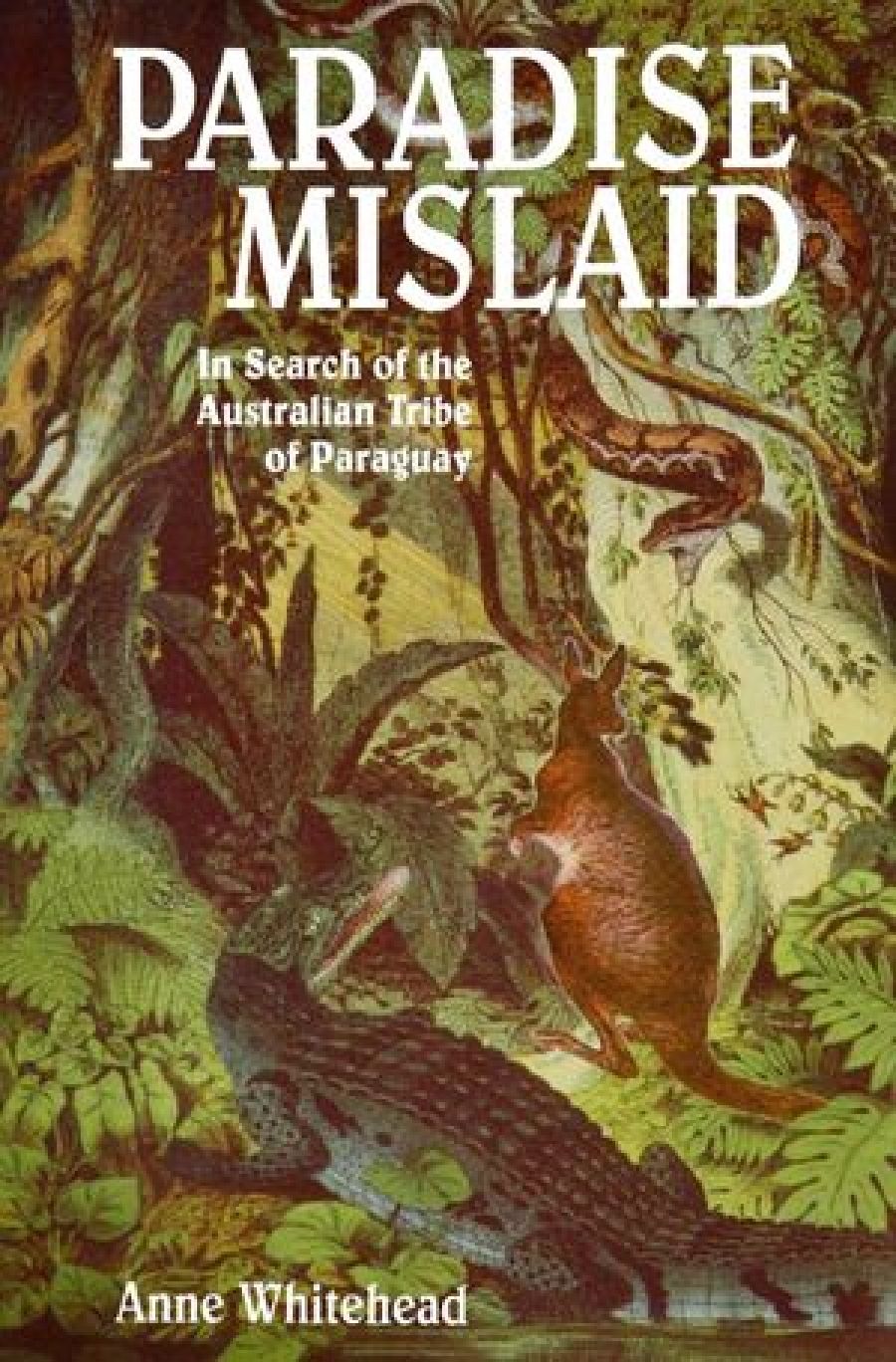
- Free Article: No
- Contents Category: Australian History
- Review Article: Yes
- Article Title: Long Lost Tribe
- Online Only: No
- Custom Highlight Text:
It was perhaps a fair return because in 1893, when the first 200 Australian settlers took up the land given to them by the Paraguayan Government to establish their Utopian paradise, they found one thousand Guarani Indians living on the land. They were ‘expelled’.
- Book 1 Title: Paradise Mislaid
- Book 1 Subtitle: In search of the Australian tribe of Paraguay
- Book 1 Biblio: UQP $35 pb, 631 pp
- Book 1 Readings Link: https://www.booktopia.com.au/paradise-mislaid-anne-whitehead/ebook/9781925283600.html
Anne Whitehead’s profile of Cadogan is a moving portrait of that thing very hard to find, a good man. He had worked as a plantation-owner, shop keeper, teacher, before being appointed a Curator of Indians in the late 1950s, after the Supreme Court had finally declared Indians to be human beings. If Queensland Nationals politicians were told that today, they would doubtless see it as proof of how the High Court was influenced by ‘dago law’. Cadogan, while without formal qualifications, collected many myths and stories. The Guarani gave him a secret name, the dragonfly. In 1964, he criticised a general for trafficking in slaves. He was sacked, his documents stolen, and was left without work.
Cadogan was one of the tribe of descendants of the Australian dreamers of one hundred years ago, a tribe that Anne Whitehead explored in three visits over the past fourteen years. She is brave enough to describe her quest as an ‘obsession’. Usually obsessions don’t produce good books, but Paradise Mislaid is very good, a subtle and intelligent blend of history and reportage.
The descendants of the tribe are a fascinating cross-section. Many have merged entirely: a red-headed, freckled school-boy among the Indians at one of the old settlements knows nothing Australian. When the author first went to Paraguay in 1983, there were still a few of the pioneer generation left. By now even their children are very old. Their grandchildren range from millionaire cattle ranchers, through subsistence farmers, to merchant bankers, travel agents, lawyers, teachers, a Time–Life correspondent to a vet (the only one to call himself a socialist and who was a political prisoner), through to the man who was a guide in the jungles for David Attenborough, who was surprised to hear him speaking with a broad Australian accent, as so many still do.
Inevitably, to follow the families is to create a portrait of Paraguayan life in the past century – a distinct mixture of good times, bad times, of dictators and war. To understand those years, the history of the country has to be traversed. Whitehead does all this with skill and understanding. She has probably the best written current account of the Jesuit communes, where the Jesuits defended their Indian converts from the slave traders, communes which lasted two hundred years, almost as long as European settlement in Australia. It is good to note that one of the close collaborators with Cadogan in his defence of the Indians was a Jesuit priest, who was imprisoned and deported after Cadogan’s death.
The insertion of five hundred Australians into outback Paraguay was a project of William Lane, a union journalist, who was distressed by the crushing of the unions in the strikes of 1891–92. Lane, a great orator as well as wordsmith, formed the ideal of a commune away from the squatters and away from the cities, which in his view sapped manliness. Lane led people to a new land, but as a fervent racist, laid down there was to be no mixing with the locals – Indian or Mezito. He was a rigid teetotaller and attempted, in vain, to enforce a pledge against liquor.
Like most charismatics, Billy Lane was a pain to live with. Even on the boat there were protests against his dictatorial manner. The colony was established in October 1893 and by December, eighty-one had left it. By May next year there was a definitive split and sixty-three seceded with Lane to form a rival colony, Cosme, some seventy-five kilometres away. Characteristically, Lane chose bad, swampy land. Even at Cosme things went bad. One of his early zealot followers, Larry Petrie, who had crossed the Pacific to the USA and worked his way south, a two-year journey, wrote of Lane:
He is a mad man, a knave seized with the madness of ambition, overpowered by the sense of divinity of himself and his mission, and for that he will barter truth, justice and the whole world plus the handful of bigots he terms the faithful.
Lane left Cosme in 1899 and went to New Zealand, where he became a conservative newspaper leader-writer, inveighing against unions and praising imperialism. New Australia gave up communal life early, and Cosme lingered on until privatisation in 1909. Some stayed on the land, some went to the cities, and a few came home.
One who came home was Mary Gilmore, who had gone to Paraguay as Mary Cameron, hoping to marry one of the colonists, Dave Stevenson ( a cousin of Robert Louis Stevenson), who jilted her and in later life, after receiving a bequest, went to live a genteel life in the Channel Islands.
Mary Gilmore, who wrote some good poetry when young, lived on to become Dame Mary Gilmore, what she would have seen as a national living treasure. In Paraguay, even allowing for her unhappiness in love, she comes across as something of a prig, one of Lane’s faithful.
Gavin Souter’s book A Peculiar People, published a generation ago, gave a subtle picture of the Utopian Movement and the history of the Paraguay settlements. Anne Whitehead, who freely acknowledges her debt, has built very well on his foundations and her publisher, UQP, have done her proud with a handsomely produced volume.


Comments powered by CComment